DT Swiss Ratchet DEG DF Anti-Pedal Kickback Hub
Compatibility: DT Swiss Ratchet DEG Rear Hubs
MSRP: $176.20 / €129.90
Blister’s Measured Weight:
- Ratchet DEG DF Kit: 41 g
- Net Weight Change: -3 g
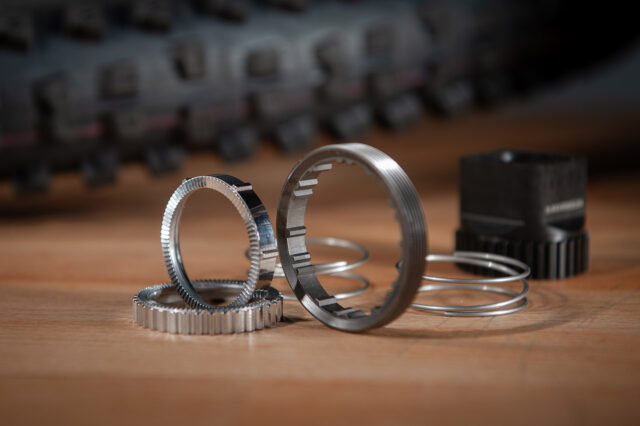
Intro
Pedal kickback and the influence of the chain on rear suspension performance have gotten a lot of attention in recent years, and a number of products — the Ochain Active Spider is probably the best known option — have sprung up to mitigate the feedback that comes from them. DT Swiss now has their own take on the concept, and it’s impressively simple.
Pedal Kickback & Chain Feedback
Before we dive into the new Ratchet DEG DF (“DF” standing for “Degrees of Freedom”) hub internals, let’s do a quick recap of pedal kickback and its associated effects. If you just want to hear about the Ratchet DEG DF, skip down to the “Design” section below. For a more detailed rundown on pedal kickback, check out the “Suspension Kinematics” section of our Guide to Buying a Mountain Bike, but here’s the short version:
On most full-suspension bikes, the distance from the top of the chainring to the top of the cassette — the span that the upper portion of the chain covers — increases as the suspension compresses. That means that either the rear wheel needs to rotate forward or the crank needs to rotate backward to feed out enough chain to cover that extra length. The amount of chain needed varies depending on the bike in question and what gear you’re in.
If you assume that the rear wheel isn’t rotating (i.e., all the extra chain length needs to come from the crank), you can calculate how much the crank needs to rotate to allow the suspension to compress fully. That figure is the amount of pedal kickback a given bike has, in a given gear. Rotating the crank backward so that the suspension can compress means tugging on the pedals, and that interaction can introduce feedback through the pedals and/or hinder the rear suspension movement.
Whether or not you actually experience that pedal kickback on any given compression is more complicated — for example, if the rear wheel is rotating fast enough, it can feed out the required chain, meaning that the crank doesn’t need to move. But it can happen in the right circumstances, and there’s another source of chain-driven feedback that happens much more consistently: movement of the chain itself.
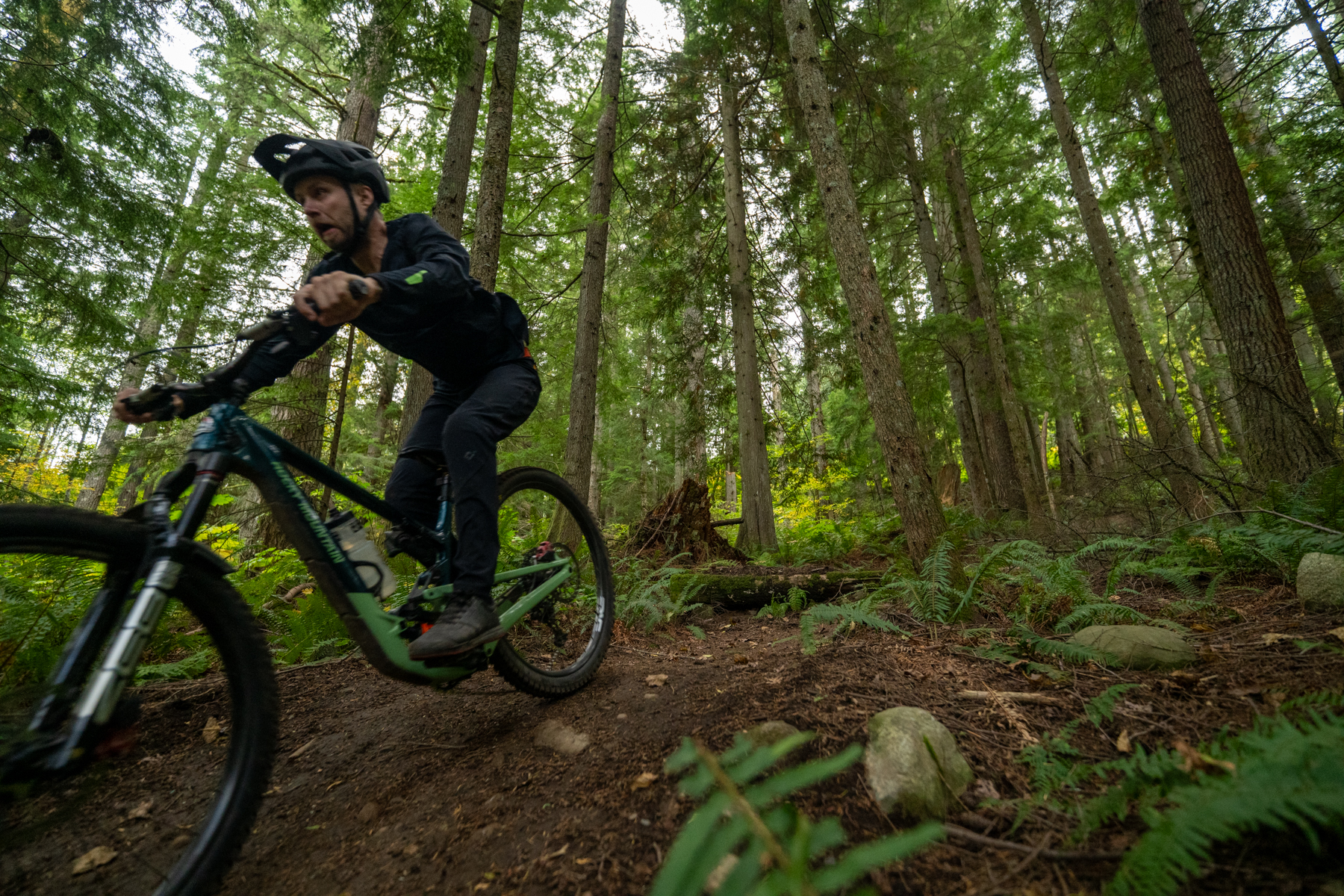
If you’ve seen a slow-motion video of a bike riding through a rough section of trail, you probably noticed just how much the chain bounces around. The chain has mass, and while it’s a very small percentage of the total bike + rider package, if you get the chain moving fast enough, it can still exert a noticeable amount of force on the pedals. The cause is different, but the result — the chain tugging on the pedals and/or hindering suspension movement — is similar to pedal kickback.
And that brings us to the Ratchet DEG DF system — DT’s attempt at adding some freedom of movement to the drivetrain so that the chain doesn’t interact with the suspension as much as it might otherwise:
Design
The Ratchet DEG DF kit is compatible with DT’s existing Ratchet DEG hubs, which feature the latest, larger-diameter version of their Star Ratchet rear hub drive system. Check out our First Look on the Ratchet DEG hubs for a more detailed description of the design, but here’s the short version:
The standard Ratchet DEG rear hubs use a pair of toothed ratchet rings, which mesh with each other to drive the rear wheel forward under pedaling torque; the rings are pushed together by a pair of springs, and can slide in and out on a splined interface so that they can disengage and allow the bike to coast. The inner ratchet ring engages with a drive ring that’s threaded into the hub shell, and slides in and out on a splined interface with the drive ring; the outer ratchet ring does the same within the freehub body.
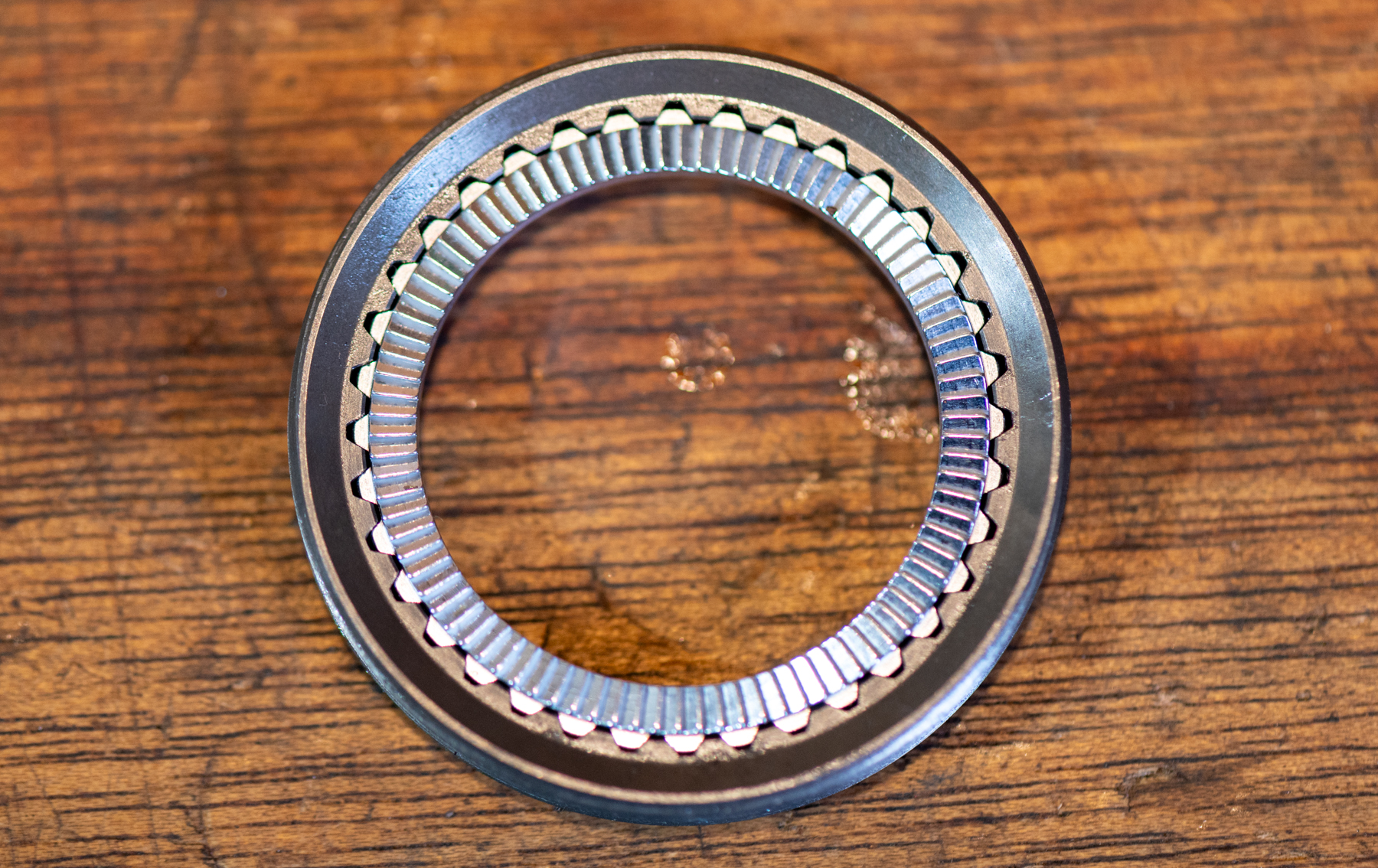
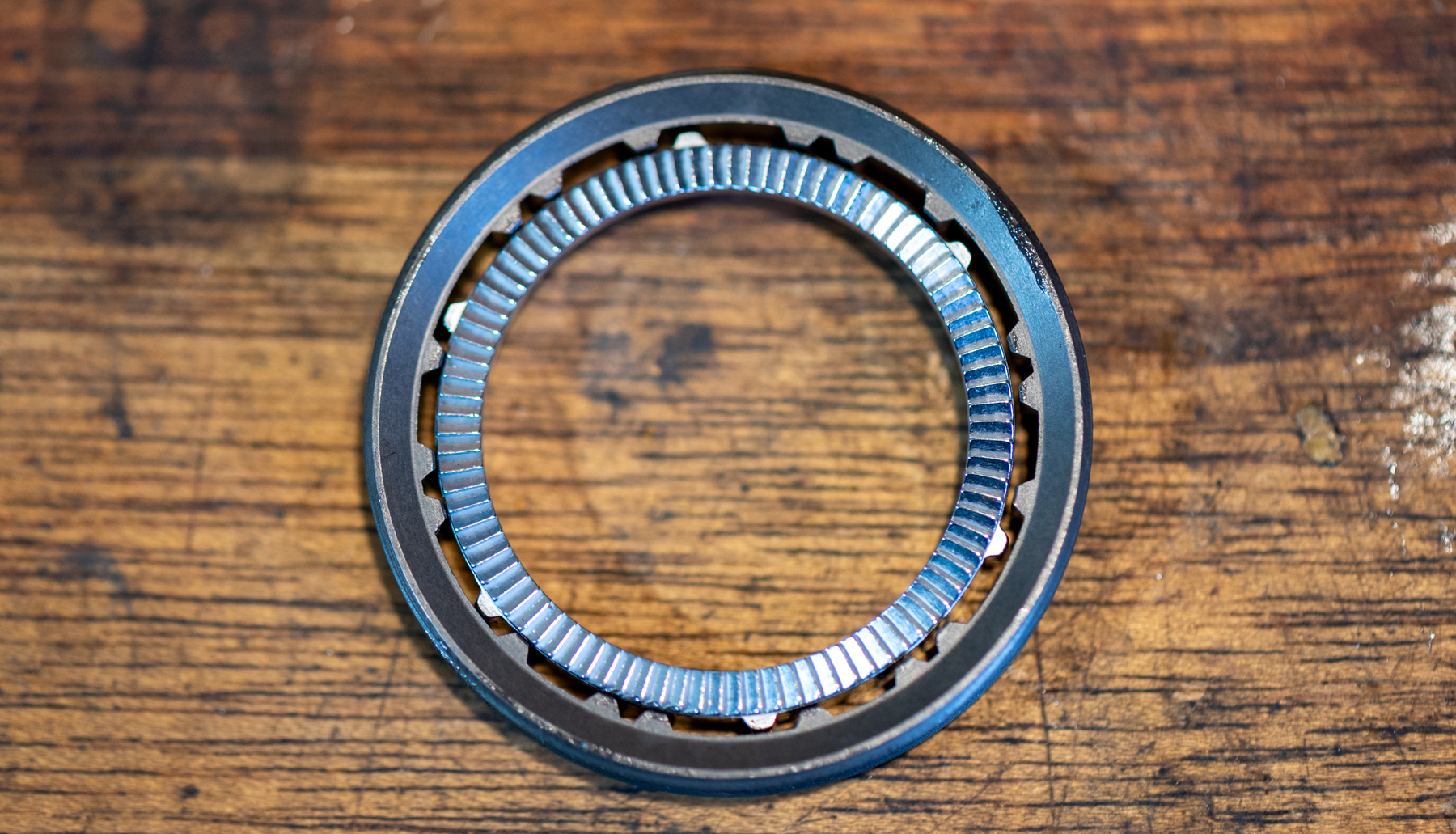
In either of the latter two configurations, when you start pedaling, the ratchet rings engage with each other per usual, but the inner one doesn’t start driving the wheel forward until it has rotated forward in the drive ring to the point where the splines on the two engage with each other. When you start coasting, the friction between the two ratchet rings means that the wheel (and with it, the hub shell drive ring) rotates forward until the splines on the inner ratchet ring hit the rear set of splines on the drive ring; at that point, the hub starts to push the inner ratchet ring forward, and the two ratchet rings click over each other as normal. The ratchet rings have 90 teeth (for 90 points of engagement, or 4° between them), but the engagement is effectively slowed by whichever placement (0°, 10°, or 20°) it’s installed in within the hub.
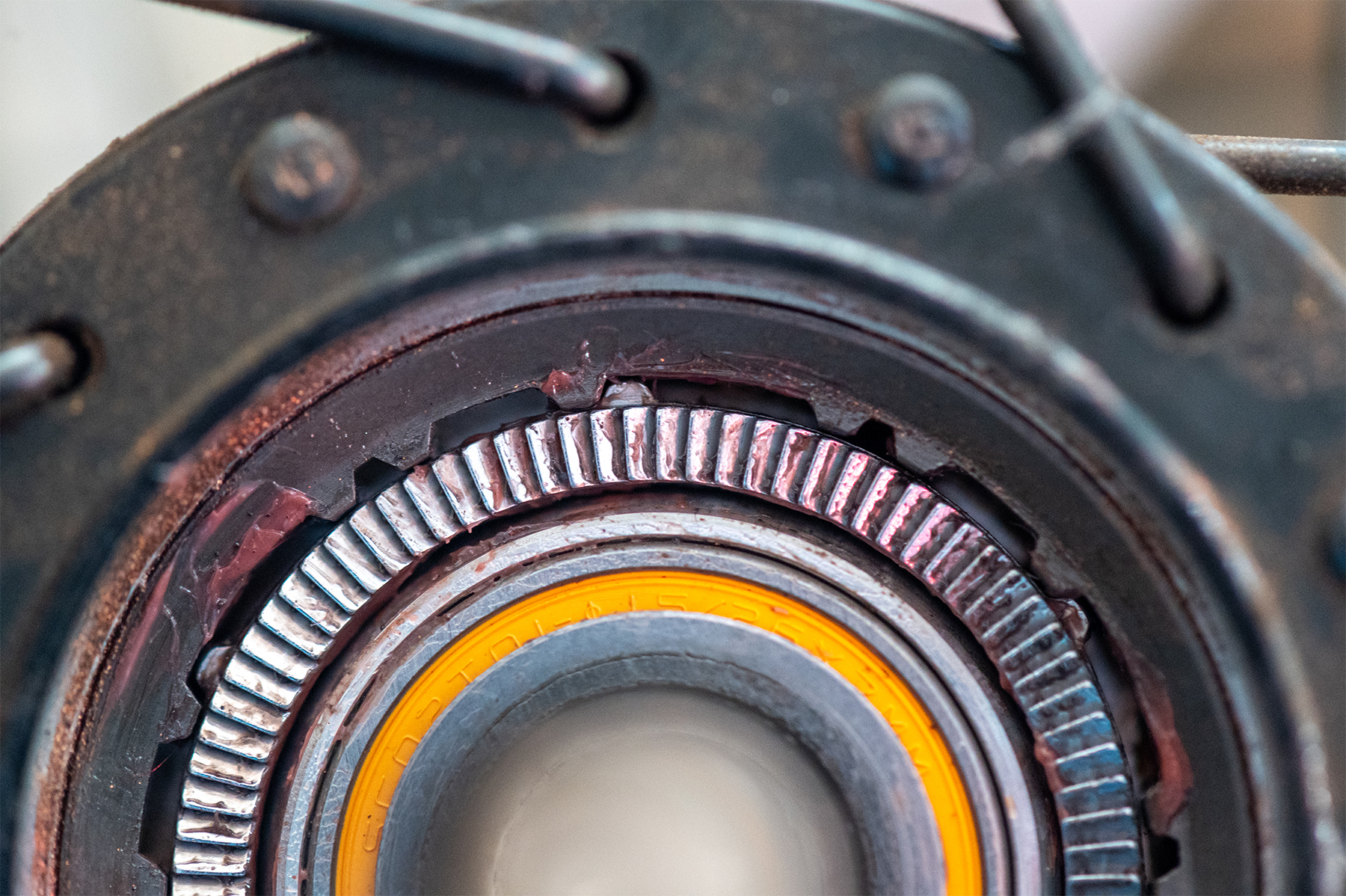
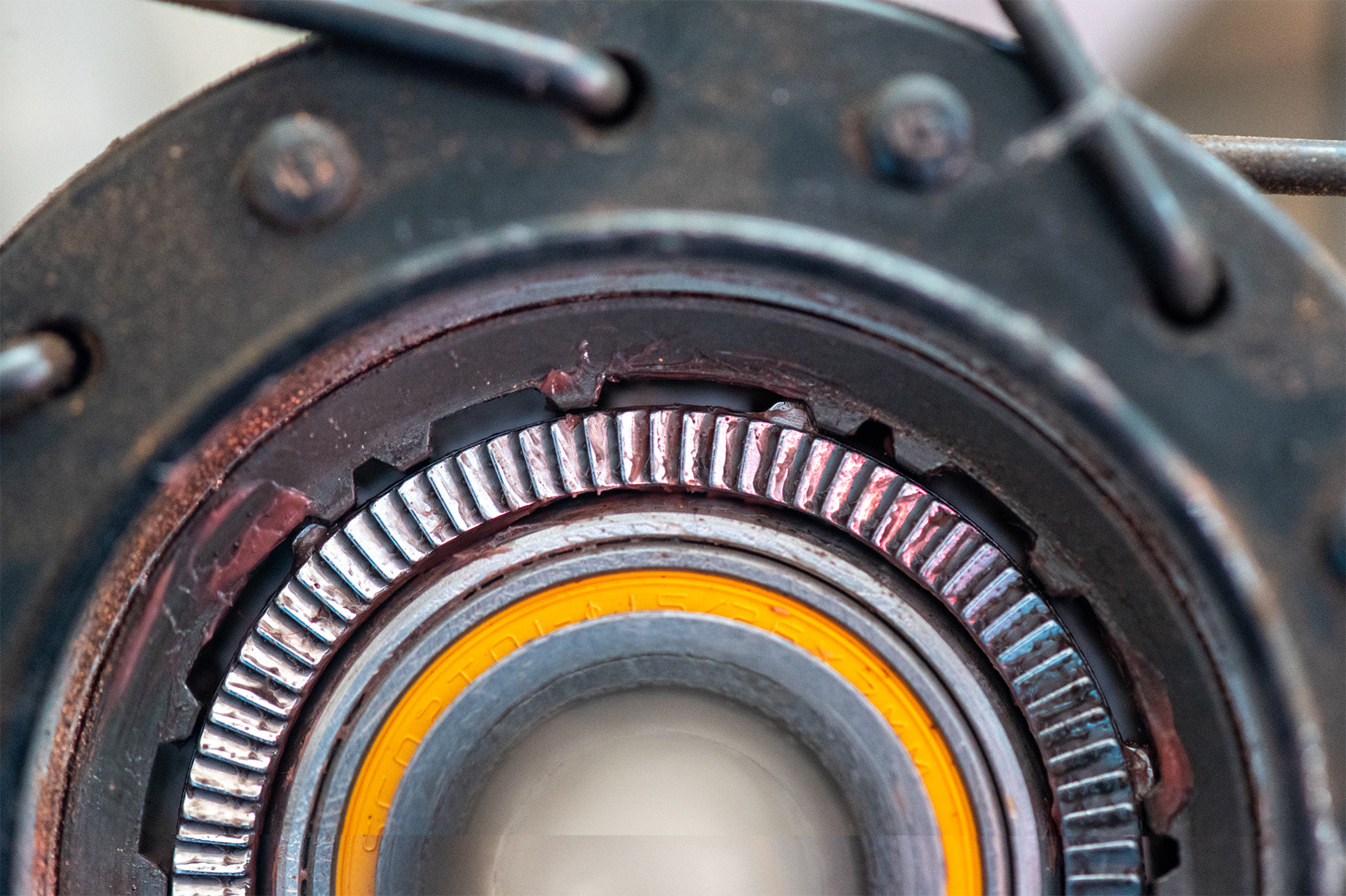
So why bother with the whole new Ratchet DEG DF design, instead of just using a slow-engaging hub to do the same thing? The key is that the Ratchet DEG DF mechanism automatically resets itself whenever you start coasting, so that you’ve got the full 10° or 20° of kickback mitigation available; with a normal hub (no matter how many points of engagement it has), the amount you need to rotate the ratchet rings to engage them is randomly distributed between 0° and the nominal engagement speed.
For example, if you have a hub with 36 POE (i.e., 10° between teeth), at the moment that you encounter a bump, the ratchet rings might have just clicked past each other, and you’d have the full 10° of movement before they engage again; they also might be on the brink of engaging, in which case you’d get 0° of movement. Most of the time, it’ll be somewhere in between. The “10°” hub actually provides an average of 5° of pedal kickback mitigation, but it ranges between 0° and 10° at random.
The Ratchet DEG DF accomplishes a similar (on paper, anyway) result to e*thirteen’s Sidekick hub, but in a mechanically simpler, lighter package. (A potential advantage of the Sidekick is that it fully disengages the three main drive pawls when coasting, for reduced noise and drag; the Ratchet DEG DF still ratchets per usual once you’re rolling.)
The standard version of the Ratchet DEG DF kit is not approved for eMTBs, but an eMTB-compatible “Hybrid” version is in the works. That version will only offer 0° or 10° of pedal kickback mitigation (dropping the 20° option from the standard kit) and 60 points of engagement rather than 90, but the overall design concept is the same.
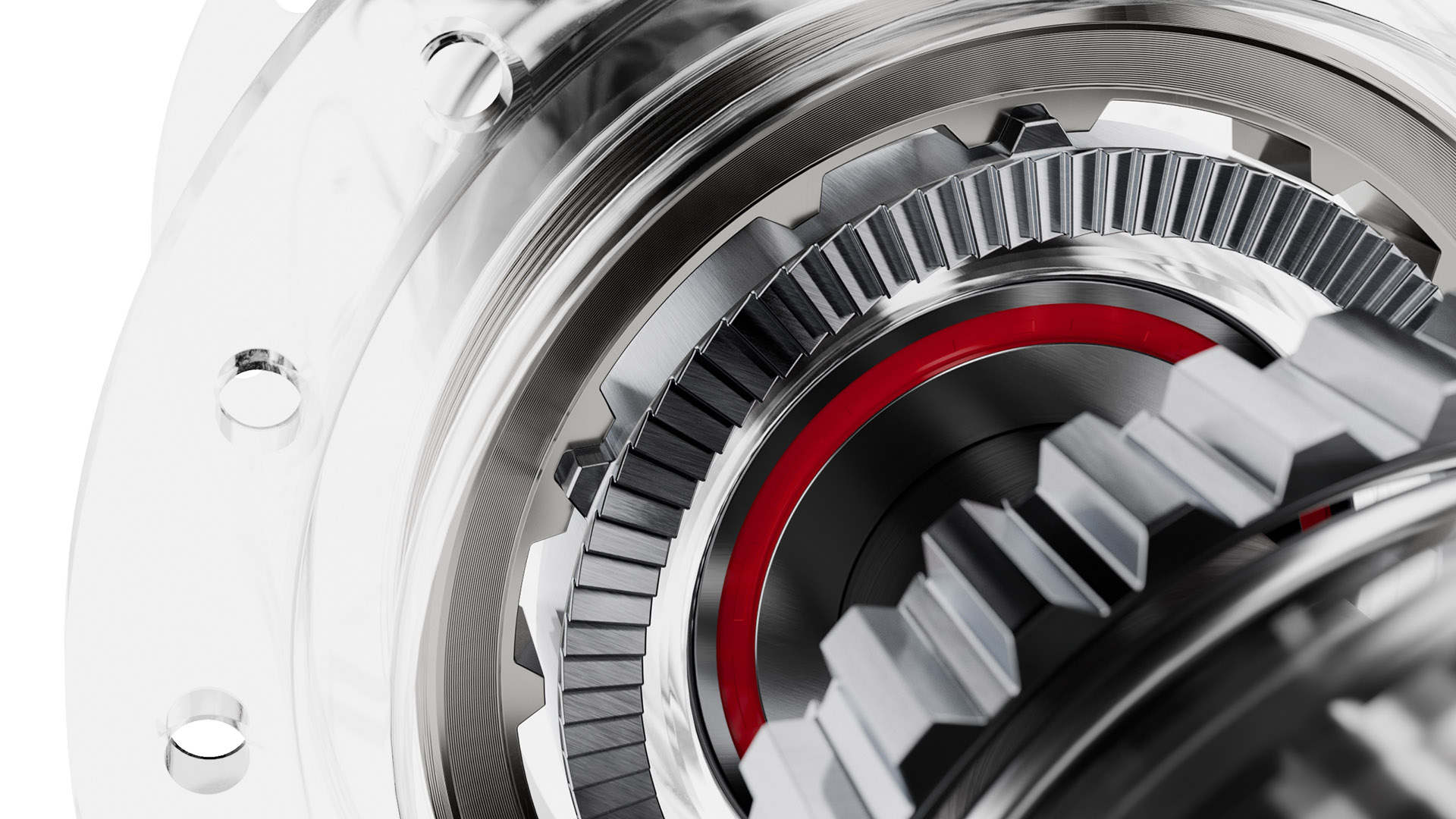
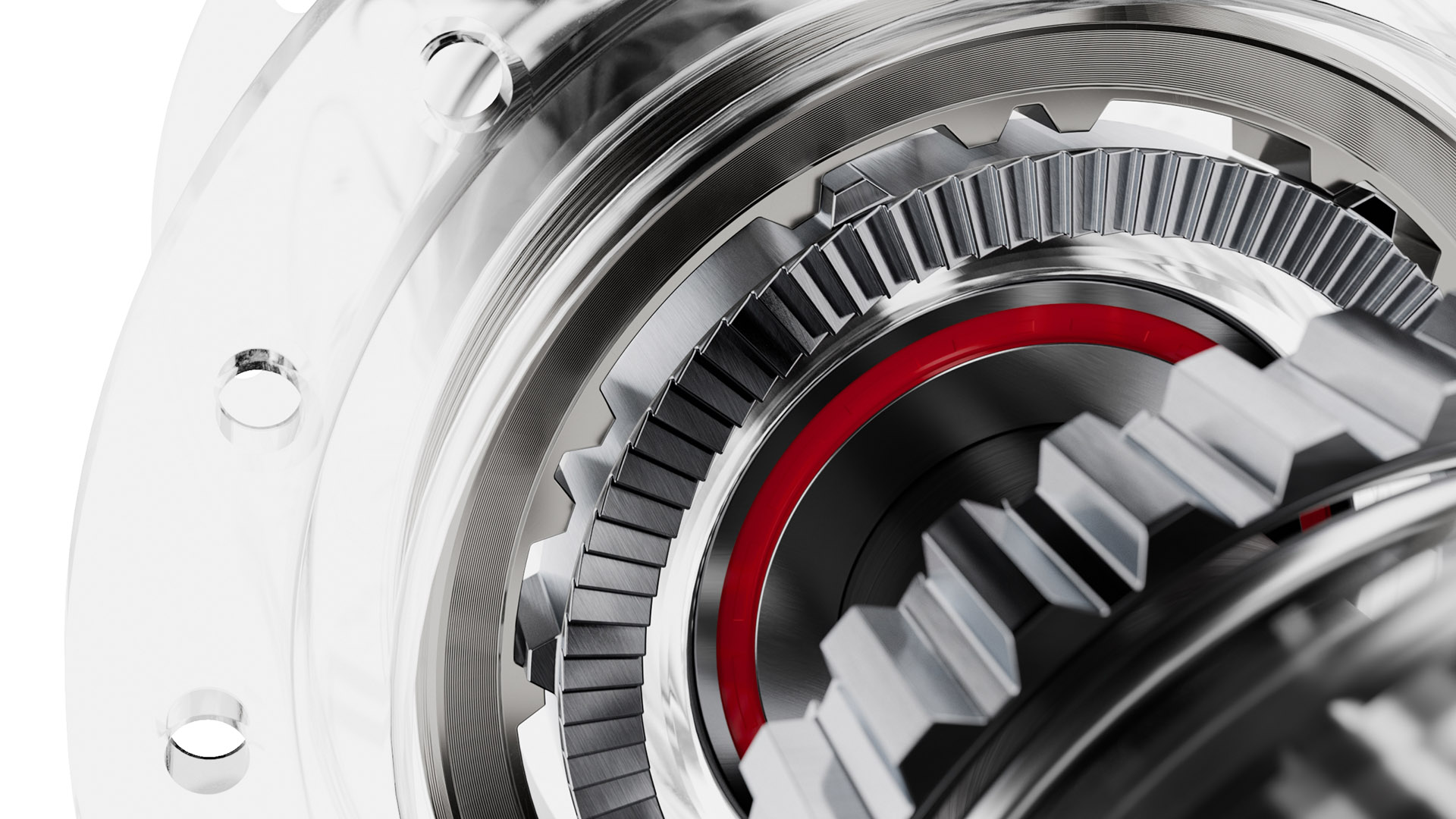
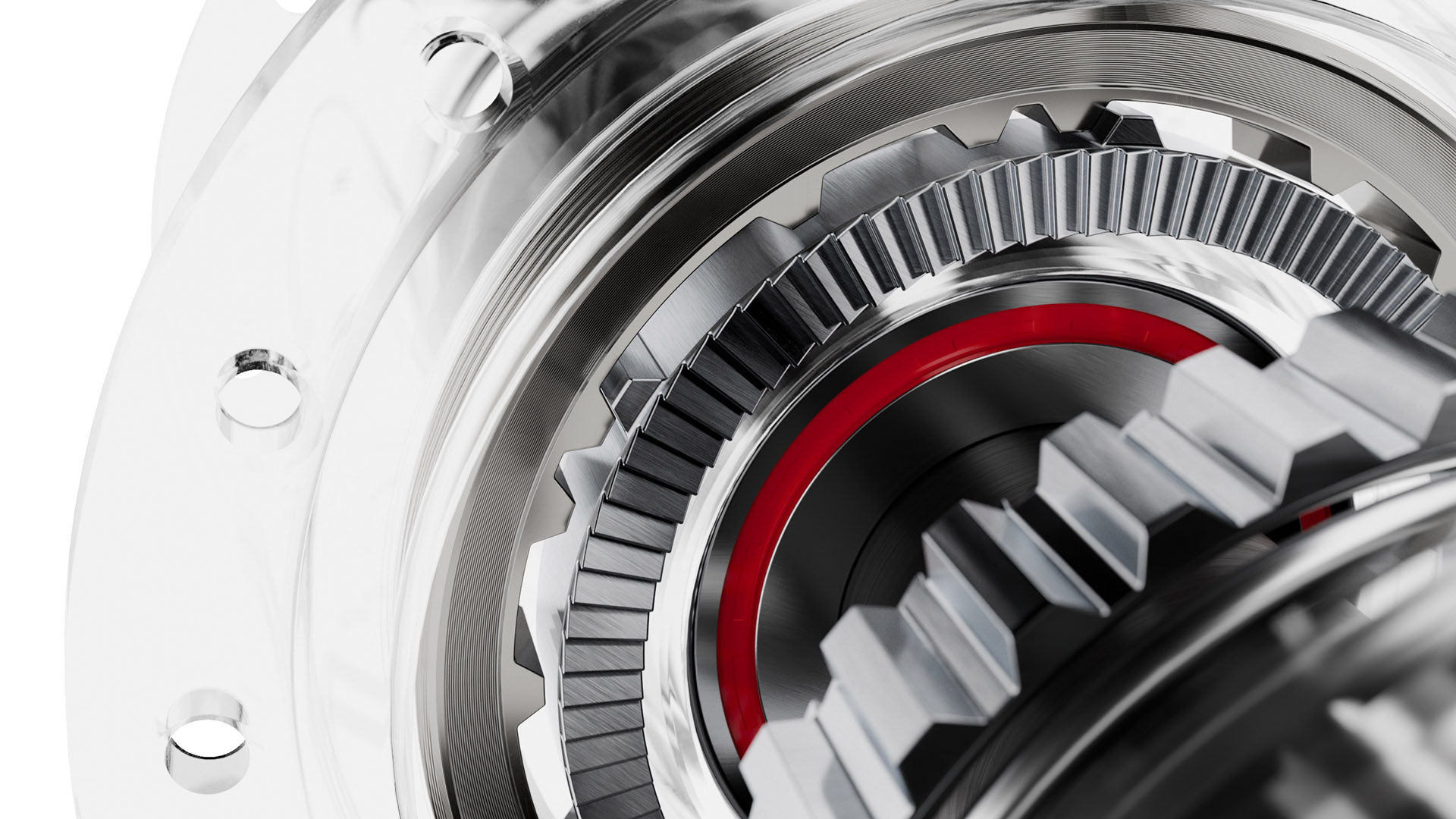
Some Questions / Things We’re Curious About
(1) How does the Ratchet DEG DF system feel on trail, and how noticeable are its effects on suspension performance?
(2) How does the Ratchet DEG DF compare to other pedal kickback / chain feedback mitigation devices, such as the Ochain and Rimpact Chain Damper?
Bottom Line (For Now)
The new DT Swiss Ratchet DEG DF freehub mechanism is an impressively simple, lightweight system for combating pedal kickback and chain feedback, but how well does it work? We’ve got one in for review and have started to find out, so check out our early impressions in our Flash Review, and we’ll have a Full Review to follow down the line.
Flash Review: Our Initial On-Trail Impressions
BLISTER+ members and those who purchase our Digital Access Pass can check out the Flash Review below to read our initial on-trail impressions. Get our Digital Access Pass to view all our Flash Reviews and Deep Dives, or become a BLISTER+ member today to get access to that and a LOT more, including the best worldwide Outdoor Injury Insurance, exclusive deals and discounts on skis, personalized gear recommendations from us, and much more.
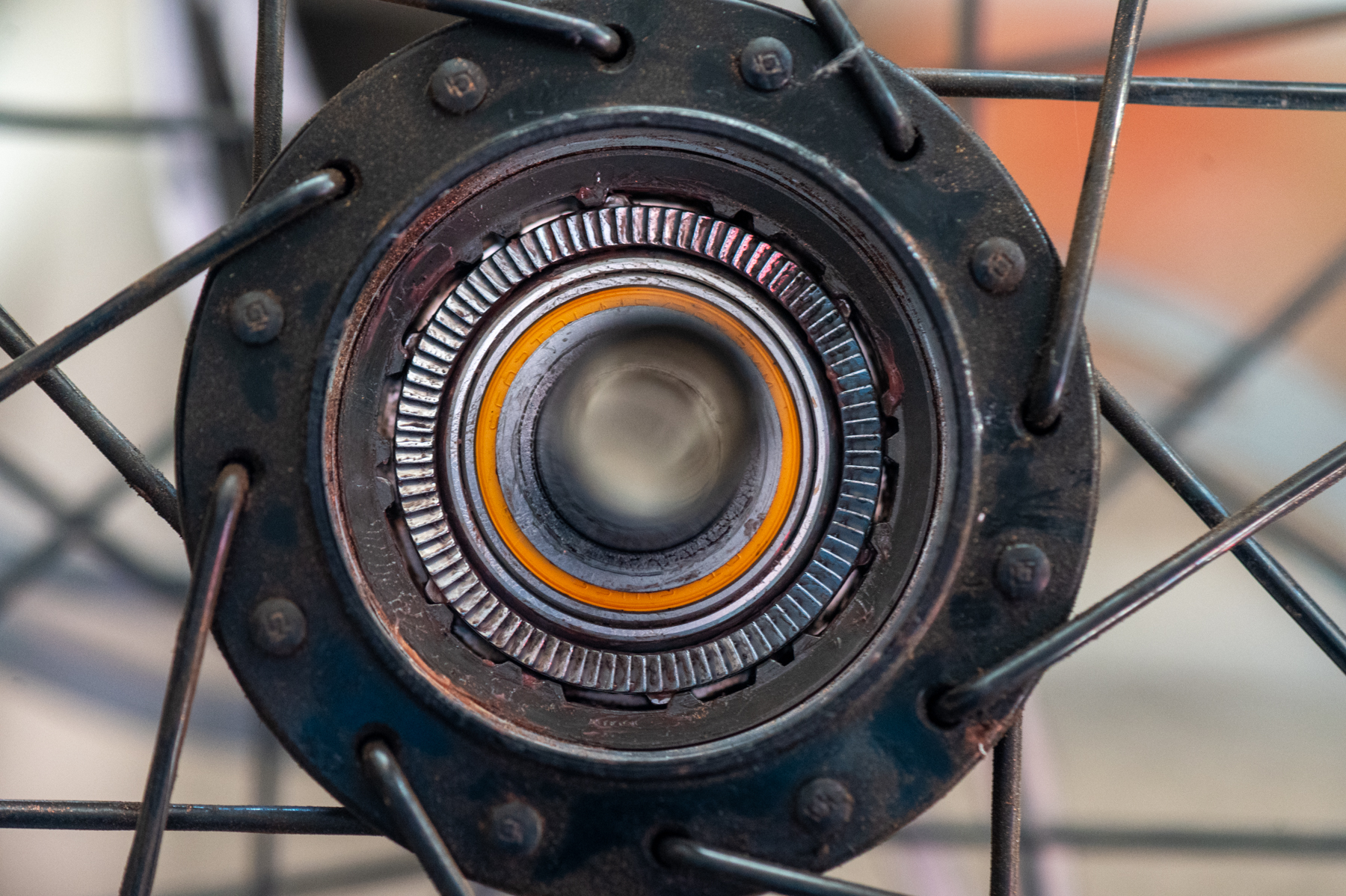
Flash Review: DT Swiss Ratchet DEG DF Anti-Pedal Kickback Hub
DT’s Ratchet DEG DF pedal kickback / chain feedback mitigating freehub is impressively simple and super light, but how well does it work? We’ve got some early thoughts.
Blister’s Flash Reviews and Deep Dives are accessible to those who purchase one of our paid subscriptions
To get our comprehensive Deep Dives and our initial, unfiltered reports on new gear, become a member and receive many other services, deals, and discounts.
If you’re already an active member, please log in.
(If you’re already logged in and a member in good standing and seeing this message in error, please refresh this page in your browser.)
